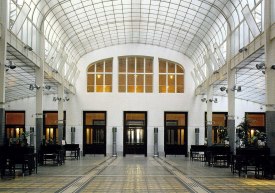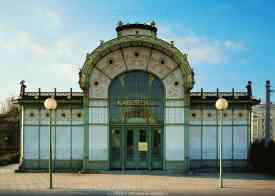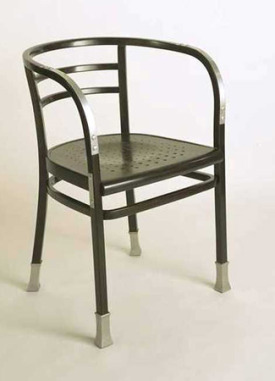Otto Wagner
 Sunday, January 27, 2013 at 9:09PM
Sunday, January 27, 2013 at 9:09PM An interesting figure in the beginnings of modern architecture is Otto Wagner (1841-1918). In some ways, his work is similar in tone to Adolf Loos, who I wrote about earlier last year, in that he was a Viennese architect whose work challenged the reigning Neoclassical/historicist traditions of the late 19th and early 20th century. Wagner was an member of the Art Nouveau movement popular in Europe at the time, and so his work did sometimes incorporated the ornamentation that Loos railed against. Still, he was very much a pioneer and influenced many of his contemporaries around the world as Professor of Fine Arts in Vienna through a textbook he published entitled “Modern Architecture” (1896).
Wagner began his career designing very traditional projects, both private residences and civic projects. One project was to build railway stations in Vienna, which impressed upon him the use of modern machinery in building. This experience, along with a growing interest in science and technology (and probably contact with the city's avant garde artists), helped instill a desire to move away from building traditional structures. He criticized existing styles as “confusing architecture with archeology” by making inimical architectural gestures. While his work was not as minimalist as future modernists, it did mark a definite break from the past.
 Vienna Postal Savings Bank (exterior)
Vienna Postal Savings Bank (exterior)
He also helped revolutionize building practices. In his Vienna Savings Bank he used thin sheets of marble clad onto brick walls, which cut down construction costs and sped up work time. He also used more modern methods such as steel frame construction, and explored using modern materials such as glass for ceilings and aluminum for radiator columns.
 Vienna Postal Savings Bank (interior)
Vienna Postal Savings Bank (interior)
Otto Wagner's work made an important contribution to modernism and his desire to achieve simpler solutions elevated the practice into a modern age, matching the period and project at hand.



Reader Comments